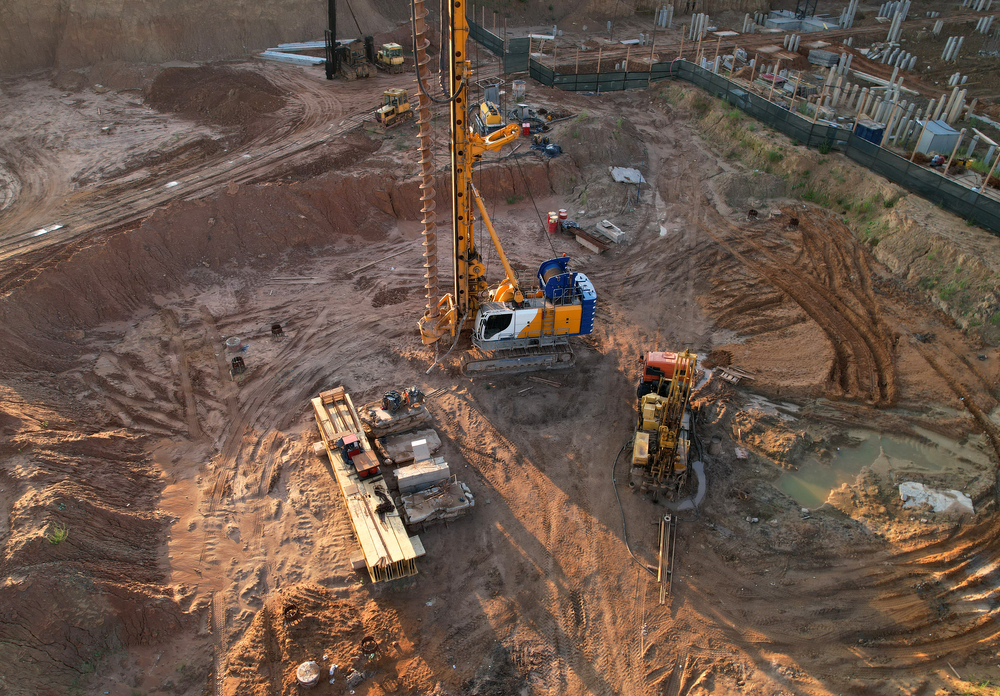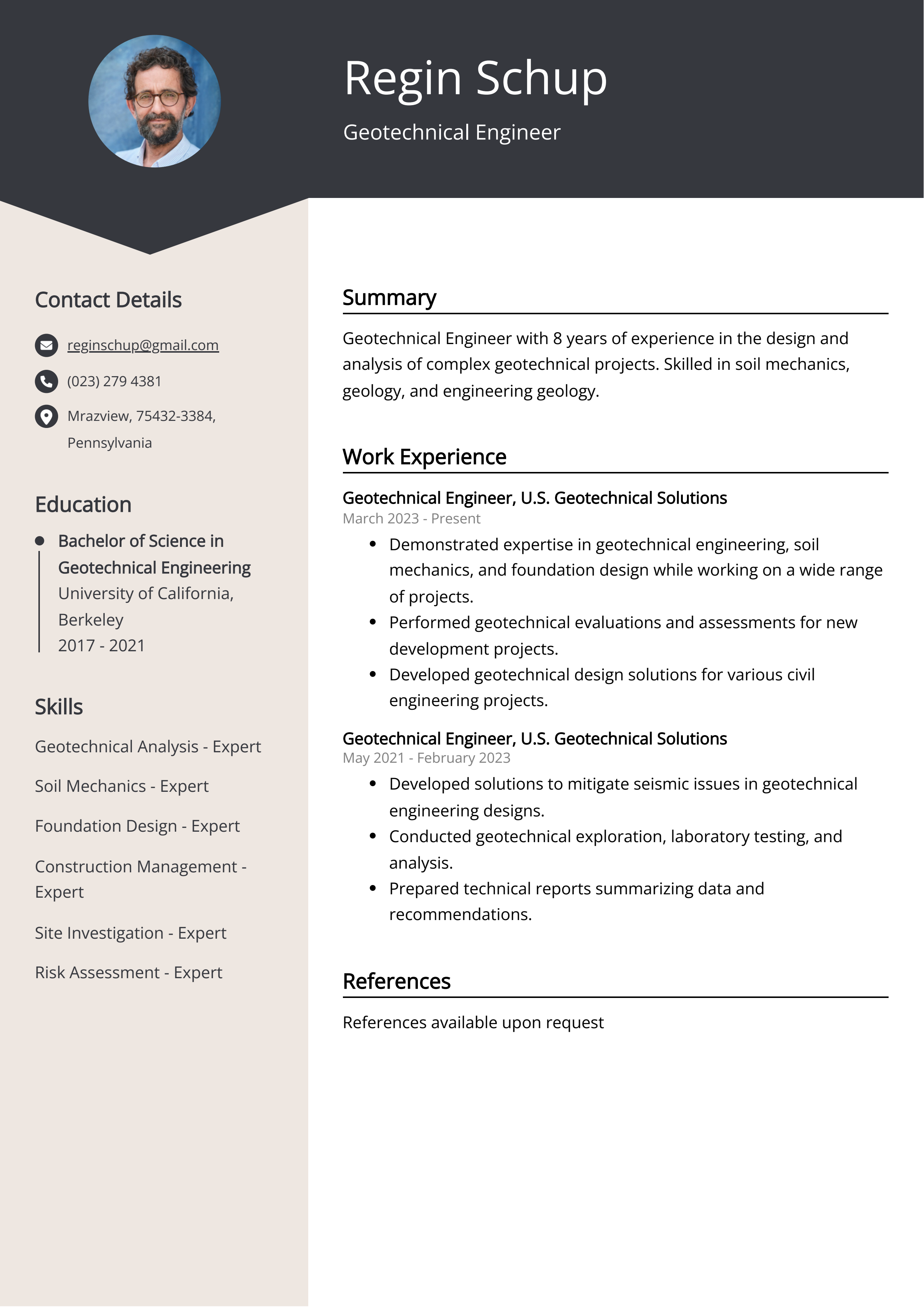Geotheta - The Facts
Geotheta - The Facts
Blog Article
The smart Trick of Geotheta That Nobody is Discussing
Table of ContentsThe smart Trick of Geotheta That Nobody is Talking AboutSome Known Details About Geotheta Some Known Factual Statements About Geotheta The 6-Minute Rule for GeothetaWhat Does Geotheta Mean?

They conduct site investigations, accumulate samples, carry out lab examinations, and assess data to assess the suitability of the ground for building and construction jobs - Engineer of Record. Based on their searchings for, geotechnical designers give recommendations for structure design, incline security, maintaining frameworks, and reduction of geotechnical threats. They work together with other professionals, such as designers, architectural engineers, and construction groups, to guarantee that geotechnical considerations are integrated right into the overall job design and application
By examining the habits and properties of soil and rock, they can recognize possible geotechnical dangers such as landslides, dirt negotiation, or slope instability. Their know-how assists avoid failures or accidents that might threaten lives and building. Here are some in-depth tasks and obligations of a geotechnical designer: Website Investigation: Geotechnical engineers conduct website investigations to collect information on subsurface conditions.
They analyze the information to recognize the residential properties and behavior of the soil and rock, including their strength, permeability, compaction characteristics, and groundwater problems. Geotechnical Analysis and Design: Geotechnical designers analyze the data accumulated throughout website examinations to analyze the security and viability of the site for building and construction jobs. They execute geotechnical computations and modeling to assess elements such as bearing capability, negotiation, incline security, side planet stress, and groundwater circulation.
Geotheta - Truths
Foundation Layout: Geotechnical engineers play an important duty in developing structures that can securely sustain the designated framework. They analyze the soil problems and lots needs to identify the proper foundation kind, such as shallow structures (e.g., footings), deep structures (e.g (https://www.indiegogo.com/individuals/37984319)., piles), or specialized strategies like dirt renovation. They take into consideration elements such as settlement limits, bearing ability, and soil-structure communication to create ideal structure layouts
They examine building plans, display site activities, and carry out area assessments to confirm that the style recommendations are adhered to. If unpredicted geotechnical concerns develop, they examine the scenario and offer suggestions for removal or changes to the style. Risk Assessment and Mitigation: Geotechnical designers assess geotechnical hazards and threats related to the task website, such as landslides, liquefaction, or soil disintegration.

Collaboration and Communication: Geotechnical engineers function carefully with various other experts involved in a job, such as architects, architectural engineers, and construction groups. Efficient communication and cooperation are important to incorporate geotechnical considerations into the general job style and construction procedure. Geotechnical engineers supply technical experience, answer questions, and ensure that geotechnical needs are met.
Fascination About Geotheta
Below are some kinds of geotechnical designers: Structure Engineer: Foundation designers specialize in designing and assessing foundations for structures. They analyze the soil problems, load demands, and site characteristics to establish the most suitable foundation type and style, Click This Link such as superficial foundations, deep structures, or specialized methods like pile structures.
They evaluate the aspects influencing incline security, such as soil homes, groundwater problems, and slope geometry, and establish strategies to avoid slope failures and mitigate threats. Quake Engineer: Quake engineers focus on evaluating and developing frameworks to withstand seismic forces. They analyze the seismic risk of a site, assess dirt liquefaction capacity, and develop seismic design standards to ensure the safety and resilience of frameworks throughout quakes.
They perform field testing, gather examples, and examine the gathered information to define the dirt properties, geologic developments, and groundwater problems at a site. Geotechnical Instrumentation Designer: Geotechnical instrumentation engineers concentrate on surveillance and measuring the behavior of soil, rock, and frameworks. They install and keep instrumentation systems that check variables such as dirt settlement, groundwater degrees, incline activities, and architectural variations to evaluate performance and offer early warnings of prospective problems.
The Facts About Geotheta Uncovered
They conduct tests such as triaxial examinations, combination examinations, straight shear tests, and leaks in the structure examinations to gather data for geotechnical evaluation and layout. Geosynthetics Engineer: Geosynthetics designers concentrate on the layout and application of geosynthetic products, such as geotextiles, geogrids, and geomembranes. They use these materials to enhance soil security, reinforce inclines, offer water drainage remedies, and control erosion.
They often tend to be investigatory individuals, which suggests they're intellectual, introspective, and curious. They are interested, methodical, reasonable, logical, and sensible. Some of them are additionally social, meaning they're kind, generous, cooperative, individual, caring, useful, compassionate, sensible, and friendly - Tailings Engineer.
In the office atmosphere, geotechnical designers use specialized software application tools to carry out estimations, develop designs, and evaluate data. They prepare reports, review job specs, connect with clients and group members, and coordinate job activities. The office setting provides a favorable atmosphere for research, evaluation, and partnership with other professionals involved in the job.
The Ultimate Guide To Geotheta
They often go to job sites to carry out site examinations, analyze geotechnical conditions, and collect data for analysis. These check outs entail traveling to various locations, often in remote or difficult terrains. Geotechnical designers might carry out soil sampling, conduct tests, and display building and construction tasks to guarantee that the geotechnical facets of the project are being executed appropriately.
Geotechnical designers likewise operate in specialized geotechnical laboratories. In these facilities, they conduct experiments, perform examinations on dirt and rock samples, and analyze the design buildings of the materials. Geotechnical research laboratory engineers function thoroughly in these atmospheres, managing testing tools, operating tools, and taping information. They work together with various other laboratory staff to make certain exact and reliable screening results.
Report this page